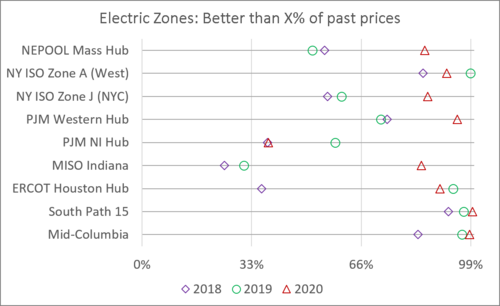Hospitals Adopt Best Energy Practices to Drive Significant Budget Savings

Hospitals are among the largest and most intensive consumers of energy in the United States. While positive efforts are being made to curb energy demand, most hospitals continue to pay more than necessary for market energy supply by using outmoded purchasing methods. The good news is that Hospital Energy, the nation’s leading energy procurement organization for healthcare, has drafted AHA/ASHE best practices that drive significant savings through financial management of energy procurement.
Best Practice
These best practice standards call for:
- Financial analytics to manage market risk and capture savings;
- Internal alignment of facilities, finance and supply chain staff around a central strategy; and
- Aggregation of spend with other hospitals to drive down supplier margins.
Using Analytics to Manage Energy
At WellSpan Health, a growing multi-hospital network based in southern central Pennsylvania, the transition from a traditional bid-based, fixed-rate procurement method to an actively managed market approach has yielded savings of $2.1 million over the current contract term. WellSpan began by organizing a multidisciplinary committee consisting of the chief financial officer, chief operating officer, treasury vice president and key facility directors. The committee actively manages the electricity and natural gas spend using market analytics developed and provided by Hospital Energy.
Additionally, WellSpan joined a large Hospital Energy aggregation network and was able to reduce electricity supplier margins by 50 percent. Next, WellSpan began using statistical market analysis to identify savings opportunities in the forward markets. This led to a new contract design in which the health system layers its energy purchasing over time. With Hospital Energy’s support, WellSpan now manages its energy spend much as it does any other market-sensitive assets and liabilities.



